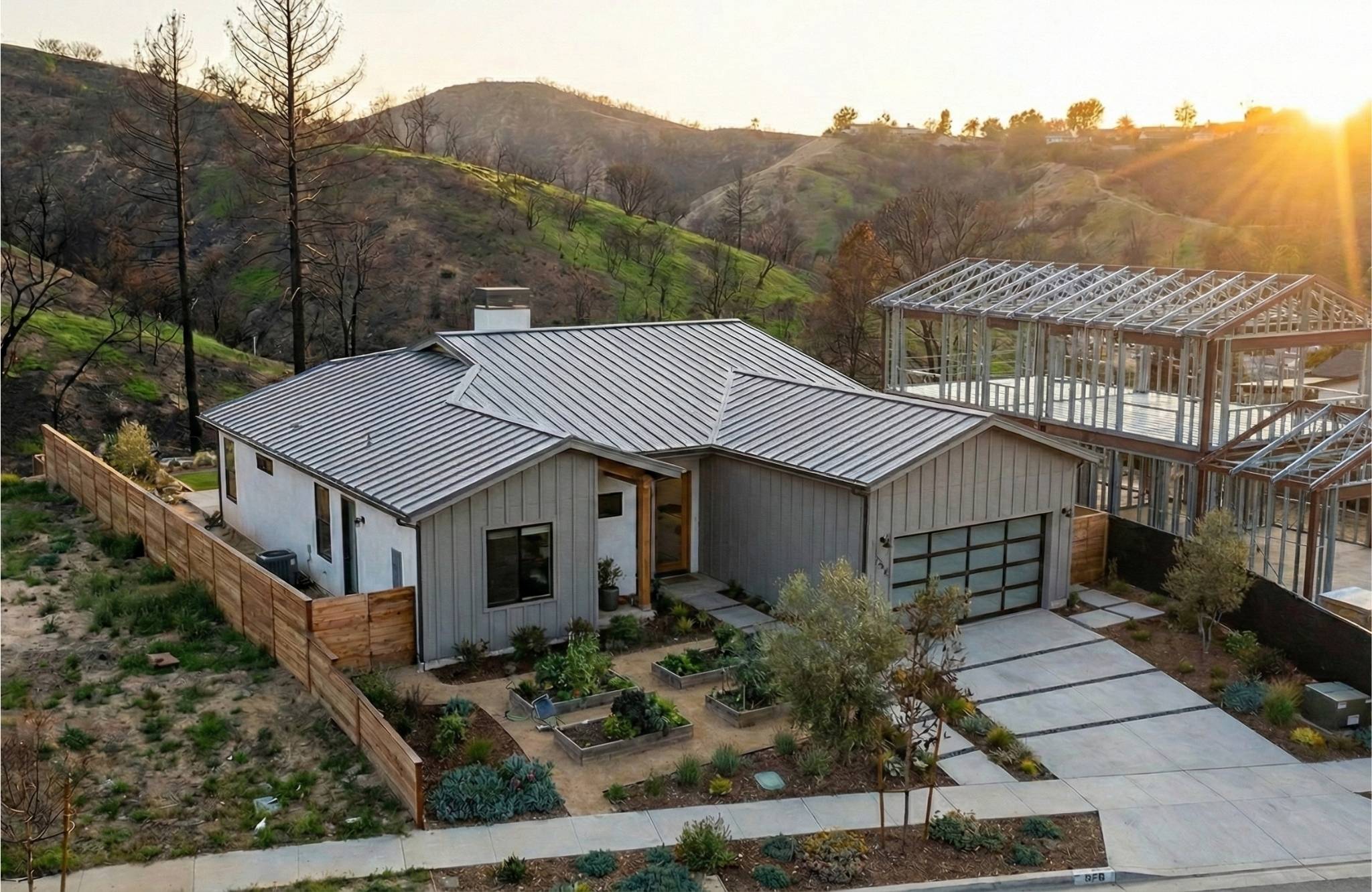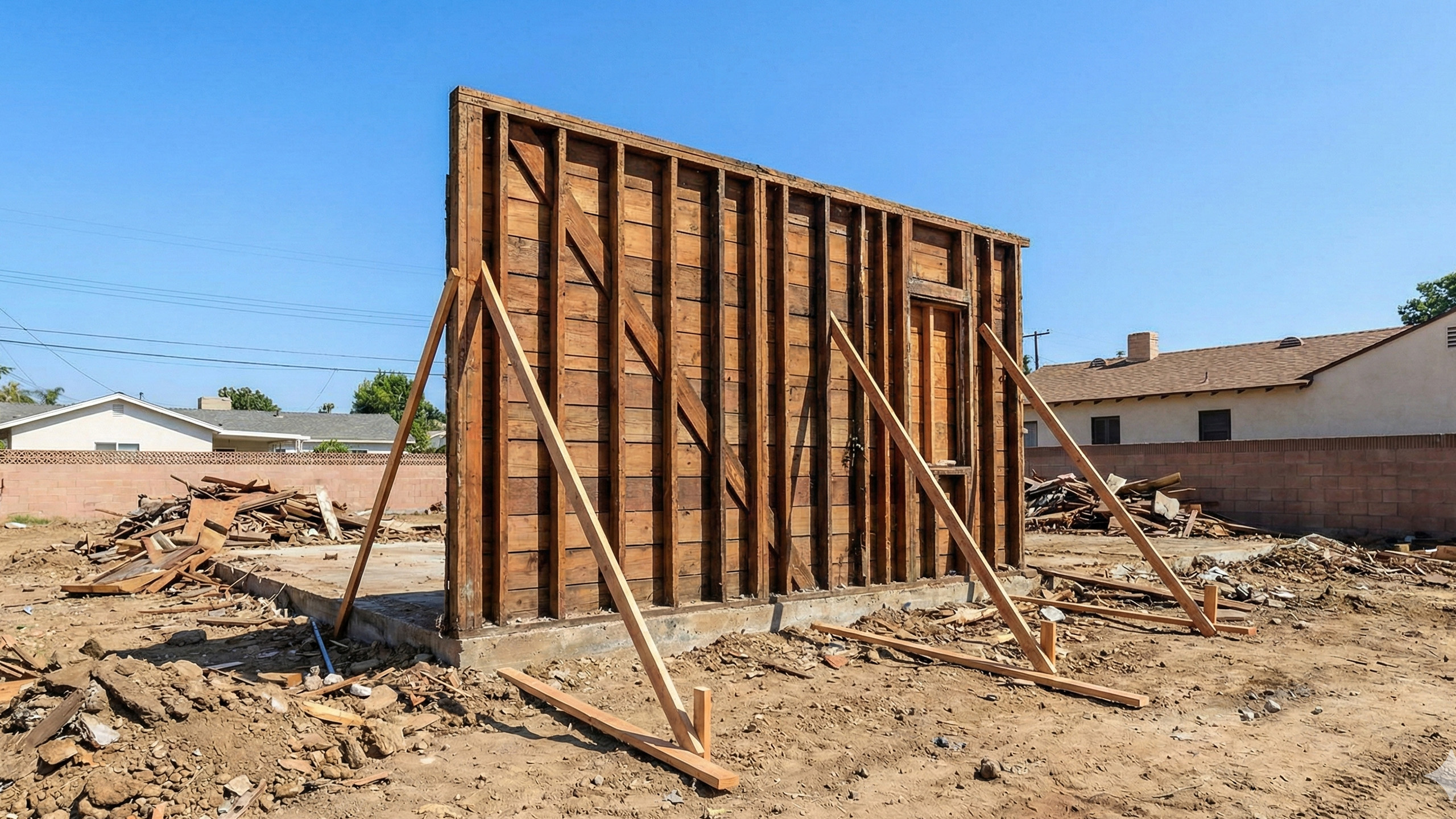Whether you’re building a new home or remodeling your existing one, there are a wide range of financial considerations at play. You’ll not only have to think about your budget for the project itself, but also anticipate changes in your property taxes.
As a Design-Build firm, Letter Four has helped many Los Angeles homeowners complete new builds and renovations that have increased the value of their properties. We understand that this has important tax implications, and want to prepare our clients for the impact their project will have on their taxes.
We’ve created this post as a quick guide to help you learn how your property taxes will be impacted by your project, and what can be expected as you move forward. You’ll also discover some helpful strategies to minimize or mitigate your property taxes.
Explaining the Basics of Property Taxes
Property taxes are collected by your county government, then distributed to the relevant local government authorities within the county. In Los Angeles, Los Angeles County collects the property taxes, and allocates them to individual city (municipal) governments, special districts, and other departments that use the funds to provide services to local citizens.
The amount you pay in property taxes is determined by two main factors:
- The assessed value of your property
- The tax rate set by various local entities, such as your city and local school district
In Los Angeles, the property tax system is governed by California's laws, most notably Proposition 13. This law states that the maximum amount of property tax cannot exceed 1% of the property's assessed value, plus any voter-approved local taxes and assessments. It also limits the annual increase in assessed value to 2% per year, regardless of changes in the market value, unless there is a change in ownership or new construction.

The Influence of New Build/Remodel Projects on Property Taxes
When there are significant changes like a new build or major renovation, a reassessment is required to determine the property’s new value. That new value will be what is taxed from then on.
Here, it’s the Los Angeles County Assessor's Office that evaluates the changes to your property. This reassessment aims to reflect the new market value of your property after the construction is complete. It is typically done once all of the work has been finished. However, it’s possible for interim assessments to occur during the construction phase, depending on the nature and duration of your project.
Once your project receives approved building permits from local authorities, copies of the architectural drawings are automatically sent to the Assessor's Office. This is so that they will have a record of the improvements you plan to make.
Your Project’s Scope
It’s important to remember that while Proposition 13 caps the annual increase in property taxes to 2%, this cap does not apply to new construction. The newly constructed or remodeled portion of your property will be assessed at current market value, which could be significantly higher than the capped value of the existing property.
Certain types of construction are excluded from reassessment. For example, repairs, maintenance, and additions that do not add significant value to the property might not trigger a reassessment. Also, specific improvements, such as those for energy efficiency or accessibility, may qualify for tax exemptions.
Generally, property upgrades are considered new construction if they:
- Significantly improve or expand the structure
- Physically alter the land
- Update the structure or major fixtures to be “like new”
The Assessor may consider the costs incurred during the project, including everything from materials to the contractor’s pay and overhead. One common approach is using standard per-square-foot construction costs for similar types of projects in the area. These costs are typically based on industry averages and local construction cost data. This cost-based approach is usually taken when the work done does not elevate your property to a “like new” condition.
It’s important to note that we are not required to submit actual construction costs to the Assessor. At Letter Four we aim to minimize the extent of the work that’s shown in the permit drawings, while of course still accurately documenting and engineering the project. We do this in order to keep the project valuation down to limit the additional taxes assessed.
If your property is “like new” after the improvements, the Assessor will base the value on the price that similar properties recently sold for, considering the value of both the structure and the land it’s built on.
Income-Producing Properties
If your property is used to generate income through renters, this will be a point of consideration for the Assessor. When your improvements are expected to help you earn more through higher rent fees, that increased revenue will be factored into your property’s new value.
When it comes to adding an accessory dwelling unit (ADU), you can expect an increase in property taxes, but one that is often modest. The Los Angeles County Office of the Assessor will perform a reassessment of property taxes upon your ADU’s completion - however, this reassessment does not trigger a complete reassessment of your entire property.
Instead, a blended assessment is performed, where the added value of the ADU is assessed independently, and the assessed value of your principal home remains unchanged. The value of the new ADU can be determined by either the total cost of construction, or through a comparative market analysis. The ADU’s value will usually be assessed at an additional 1% tax rate on your existing tax bill, and will be capped at 2% under Prop 13. So if your ADU were to be valued at $250,000, then your tax bill would likely increase by 1% of that: $2,500.
Strategies to Mitigate Property Tax Increases
To manage potential tax increases, you have a few options:
- Consider the timing of your project. Property tax assessments in Los Angeles are based on the status of your property on January 1st each year. If your project is completed after this date, the increased value may not be assessed until the following year.

- Keep detailed records of your project to ensure accurate assessments. This includes retaining all architectural plans, building permits, contracts, invoices, receipts, and change orders related to the project. Keeping a log of all of this can provide a clear and comprehensive overview of the project's scope and expenses, and can be invaluable if you need to contest a reassessment. This is where working with a professional Architect and/or Builder can pay dividends.
- Take advantage of exemptions that can reduce your overall tax bill. These could include energy efficiency and accessibility upgrades. If your project entailed seismic retrofitting or fire safety improvements, you may qualify for temporary exemptions.
- Make use of applicable special designations. If your home is a historic property, you may be eligible for property tax relief via the Mills Act.
Appealing the Reassessment
While it’s not easy, the most effective way to soften the blow of a big tax bill is to lower it altogether. If you believe the new assessed value of your property post-construction is not reflective of its fair market value, you have the right to appeal the assessment.
This process involves providing evidence to support your claim of a lower value. This could include a number of documents, such as sales data on comparable properties in your area, a professional appraisal report conducted by a licensed real estate appraiser, photographs of your property, or even repair estimates from contractors who can verify your property needs work that would reduce its market value.
You will need to file your appeal between July 2nd and November 30th, and pay a $46 filing fee. After filing, a hearing will be held in which the Assessment Appeals Board reviews and makes a judgment for your case.
Calculating Your Property Tax Increase in LA County
While it’s not possible to make an exact calculation before your project has ended, it is possible to make a rough estimate of how much your property taxes will increase.
For a simple estimate based on your home’s projected value, you can use Smart Asset’s easy Property Tax Calculator tool. But actually determining an accurate value increase requires some extra work, so we’ve provided more detailed steps below to help you find a more precise figure.
- Assess Your Property's Current Value: First, determine your property's existing assessed value, which can be found on your most recent property tax bill or official home appraisal.
- Determine the Increased Value Due to Construction: The reassessment will consider the value added by the new construction or major renovation. You can estimate this by considering the cost of the project, or by working with a professional like Letter Four.
- Calculate the New Assessed Value: Add the estimated increased value to the existing assessed value to get the new assessed value of your property post-construction.
- Find the Applicable Tax Rate: Look for the Tax Rate Area (TRA) code on your property tax bill. You can also look up TRAs on the County’s TRA map.
Once you’ve found your TRA, enter code on the Los Angeles County Auditor-Controller's website to find the Total Year Tax Rate for your area. For instance, a TRA code of "00013" resulted in a 2022/2023 tax rate of 1.16552%.
- Calculate Your New Property Tax: Multiply the Total Year Tax Rate by your property's new assessed value to estimate your new property tax amount.
Remember, this is a simplified method to estimate your property tax increase. The actual calculation might be more complex, especially if your project involves exemptions or other special considerations. For a precise calculation and to understand how specific aspects of your project might affect your taxes, it's advisable to consult with a tax professional or the Los Angeles County Assessor's Office.

As an example, let’s use the average property tax rate in Los Angeles County: 0.82%. The tax on a house valued at $880,000 is approximately $7,216. But if a renovation project were to increase the value to $1.5 million, the property tax would rise to $12,300.
Planning the Practicalities of Your Project
By making informed decisions throughout your custom home or remodeling project, you can effectively prepare for its impact on your property taxes. Collaborating with professionals like Letter Four ensures that every aspect of your project is not only aligned with your vision, but also thoroughly documented and planned with your reassessment in mind.
Need some guidance in the first stages of planning your project? Download our free Project Planning Pack to get a complete walkthrough. We go over all of the key considerations, and even provide helpful exercises to clarify your design goals and make rough estimates of your project budget.






.svg)























.png)